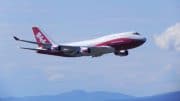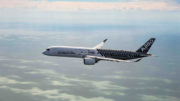29th April, 2022 – IBA, the leading aviation industry consultant, this week outlined the continued buoyancy of the freighter aircraft marketplace, even as the recovery from the pandemic gathers pace.
The Boeing 737-800 freighter fleet has almost doubled in size to 113 from 59 a year ago, demonstrating its sustained appeal as an aircraft of optimal size and value for conversion. Despite its increasing legacy status, the Boeing 767-300 freighter fleet has also continued to grow from 127 to 156, driven by the plentiful availability of feedstock aircraft from retiring passenger fleets.
Despite their much smaller baseline numbers, data from IBA’s InsightIQ platform demonstrates a clear growth in the Airbus converted freighter fleets. The A321 freighter fleet has doubled from four to eight aircraft over the past year, while the size of A330 (-200 and -300) fleet has also increased from 10 to 16.
The growth in demand for all of these aircraft types is illustrated by the increasing number of conversion centres for each, with at least 9 facilities becoming active for the A321, 6 for the A330 (with IAI still to announce) and 15 for the Boeing 737-800.
The number of conversion lines for the Boeing 777-300ER is also growing as demand increases. IAA, which initially unveiled its conversion programme for the aircraft in 2019 with a single line, has approved two others. Further conversions programmes have now been rolled out by NIAR WERX and Mammoth Freighters.
Over the past twelve months, IBA estimates that the market values of most freighter types have remained stable with only a slight drop, especially in younger model aircraft. The value of a 2006 build Boeing 737-800BCF has dropped by just 3.7% to US$21.23 million, and the value of a 2001 build A321-200PTF has declined by 6.3% to US$22.79 million. The only major exception are the Boeing 737 ‘Classic’ types where, for example, a 1999 build 737-400BDSF has fallen by a more significant 14% to US$7.05 million.
IBA’s initial views on the new purpose built wide-body freighter types is that both will command a considerable premium on the existing in production Boeing 777F which is valued at US$157 million. IBA estimates that a new Airbus A350F, with its cargo capacity of 109 tonnes, will have a value of US$172 million while a new Boeing 777-8F, with its marginally greater capacity of 112 tonnes, will have a value of US$187 million.
During the webinar, IBA also outlined the impact of the Russia – Ukraine crisis on the freighter aircraft market. InsightIQ information shows that there are 23 freighter aircraft on lease within Russia from non-Russian lessors – a fraction of the notable number of passenger aircraft in the same situation, though still significant in terms of asset value. The non-Russian lessors with the greatest exposure in the freighter market are AerCap, with 10 freighters placed in Russia, followed by Voyager Aviation and Airwork both with five, although the latter has repossessed one of its aircraft.
More widely, the restrictions on Russian widebody freighters operating outside of the country, coupled with detours caused by airspace closures and rising fuel prices have cumulatively affected air freight rates which, as of March 2022, were up 27% year on year.
Source : IBA










Be the first to comment on "BOEING 737-800 DOMINATING FREIGHTER GROWTH, BUT A321 AND A330 CONVERSIONS INCREASING"